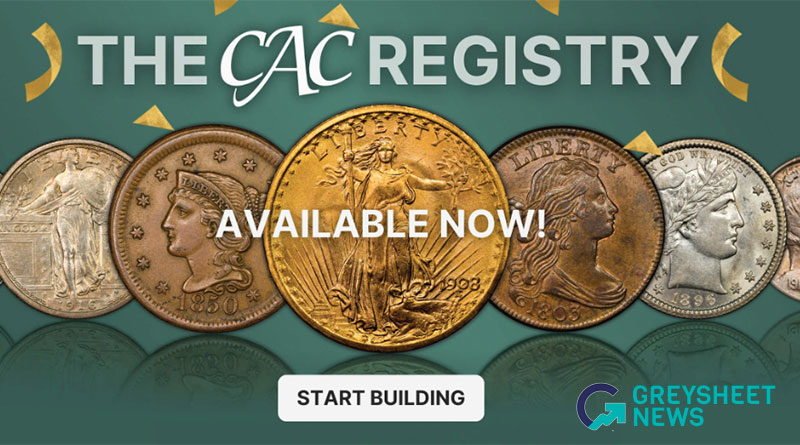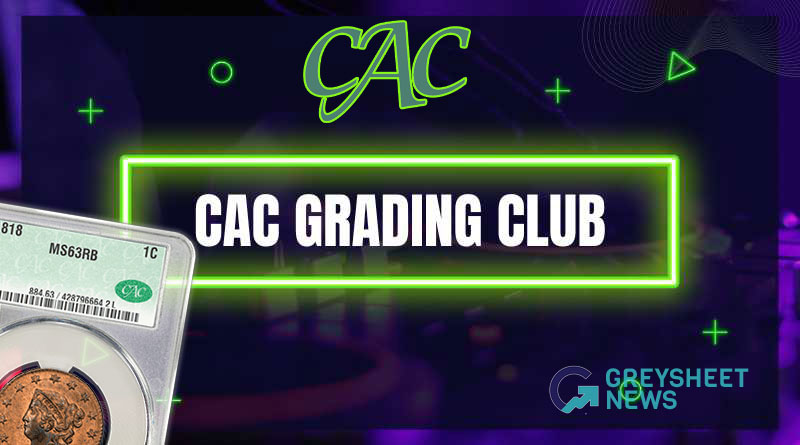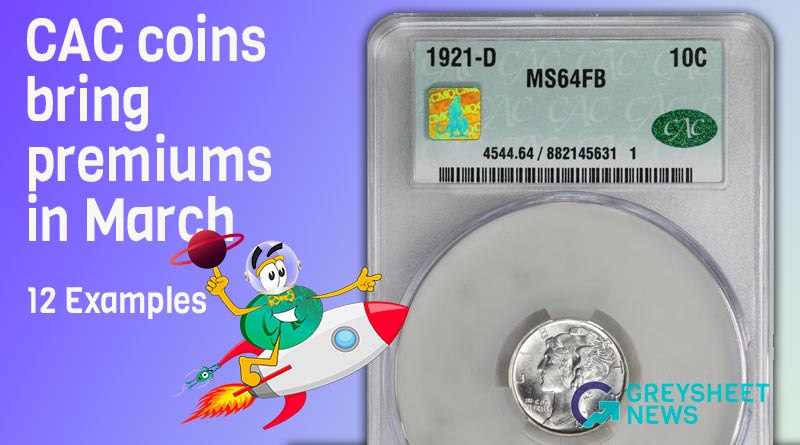CAC Coins Gain Premiums in March 2018 Auctions
In recent years, CAC coins – those which have been given a seal of approval for exceptional quality from Certified Acceptance Corporation – have made gains at auction. CAC labels coins certified by Professional Coin Grading Service (PCGS) and Numismatic Guaranty Corporation (NGC) and acknowledges the fact that some third-party graded (TPG) coins are better representatives of their respective grade than others awarded the same numerical grade.
CAC was established in Far Hills, New Jersey, in 2007 by numismatic innovator and coin expert John Albanese, who also co-founded PCGS in 1986 and NGC in 1987. CAC awards two types of bean-shaped labels on PCGS- and NGC-slabbed coins, with green labels indicating a coin on the high-end of its grade and gold stickers representing a coin that is virtually certain to receive a higher grade if resubmitted to a TPG.
CAC coins continue to gain appreciation by dealers and collectors, and routinely receive higher bids than similarly graded coins in TPG holders not bearing CAC labels. Here’s a look at 10 CAC coins that hit the auction block in March and their final bids as compared to hammer prices for their similar non-CAC counterparts.
- A CAC EF40 1903-S Morgan dollar sold for $357.75 in a March 4 GreatCollections auction. Two days later, Heritage Auctions traded a similar, non-CAC EF40 1903-S for $253.20, or more than $100 less than its CAC-labeled counterpart.
- Also on March 4, GreatCollections sold a CAC AU58 1911-S $10 gold eagle that closed for $3,046.50. Less than two weeks earlier, a similar AU58 1911-S eagle without the CAC sticker took just $2,640.
- A CAC-approved MS67 1914-D Barber dime took $8,493.75 at a March 11 GreatCollections auctions, while recently sold non-CAC examples went for prices between $3,290 and $4,700.
- During the GreatCollections auction on March 11, a CAC MS65 1928 Hawaiian half dollar sold for $3,543.75. In the previous month, two non-CAC MS65 1928 Hawaiian halves took $2,640 and $2,880.
- A CAC MS67RD 1947 Lincoln cent sold for $6,469.88 at a March 18 GreatCollections sale. Yet, just four days later, Stack’s-Bowers sold a similar non-CAC MS67RD 1947 Lincoln cent took just $1,440 – a mere fraction of the figure the CAC specimen sold.
- A CAC MS67RD 1927 Lincoln cent sold for $5,280 at a March 22 Stack’s-Bowers sale. But in the previous four months two similar MS67RD 1927 Lincoln cents without the CAC label managed final bids of only $1,220 and $1,020.
- A CAC MS66RD 1930-S Lincoln cent hammered at $1,320 in a March 22 Stack’s-Bowers auction, yet three similar pieces sold by Heritage and GreatCollections in late 2017 and early 2018 went for prices ranging from only $360 and $596.25.
- A CAC MS64 1925-D $20 Saint-Gaudens double eagle sold for a whopping $31,200 at a March 22 Stack’s-Bowers event, but two similar numismatically rare Saints that were sold by Heritage in early 2017 sold for prices of $12,512.50 and $14,100.
- On March 22, a CAC-approved MS64 1850-O Seated Liberty half dollar sold for $7,800, yet in the past couple years when similar MS64 1850-O halves appeared at auction they took no more than $3,550.
- A CAC MS64 1889 Seated Liberty half dollar sold for $2,640. That’s nearly double the amount realized by a similar MS64 1889 half dollar that traded for $1,500 in a February Heritage sale.
As evidenced, CAC coins are re-crafting the TPG market, creating a situation in which certified coins bearing a CAC label routinely (but not necessarily always) score premiums of 10% to 50% — and often much more – than their “ordinary,” non-CAC counterparts. While CAC coins have been on the marketplace for about a decade, the TPG market is ever evolving and only time will tell if the typical spread between CAC coins and non-CAC coins will remain stable or continue expanding. At the very least, the rundown of final bids for a selection of CAC coins and their non-CAC counterparts serves as an informational peek at this segment of the market and is helpful for understanding the marketplace dynamics as they are now.

Download the Greysheet app for access to pricing, news, events and your subscriptions.
Source: CAC Grading
CAC was formed in 2007 by John Albanese, a respected authority on coin grading and the rare coin market, along with twenty-two leading members of the numismatic community. Because certified coins of the same grade can be of varying quality, CAC’s mission was to advocate for the hobbyist by establishing an extremely stringent standard of grading. As a verifier of previously certified coins, CAC only recognizes coins that meet the highest standard with the now famous green sticker. Out of all the coins submitted to CAC, less than half receive the honorable CAC sticker. As a result, the CAC sticker serves as an unmistakable means of identifying premium coins for the grade.
In 2022, John Albanese assembled over one hundred and fifty leading members of the numismatic community with a purpose to reclaim accuracy and consistency in grading. After all, why merely sticker a previously certified coin when the same stringent standards can be applied within the context of a grading service? Thus, CAC Grading was born! The only difference now is the grade assigned to a coin is a true representation of that coin. Boasting a team of world-class graders including Ron Drzewucki, John Butler, among others, CAC is committed to applying an unparalleled level of expertise to every submitted coin. As a result, hobbyists can have total confidence in a coin certified by CAC.











